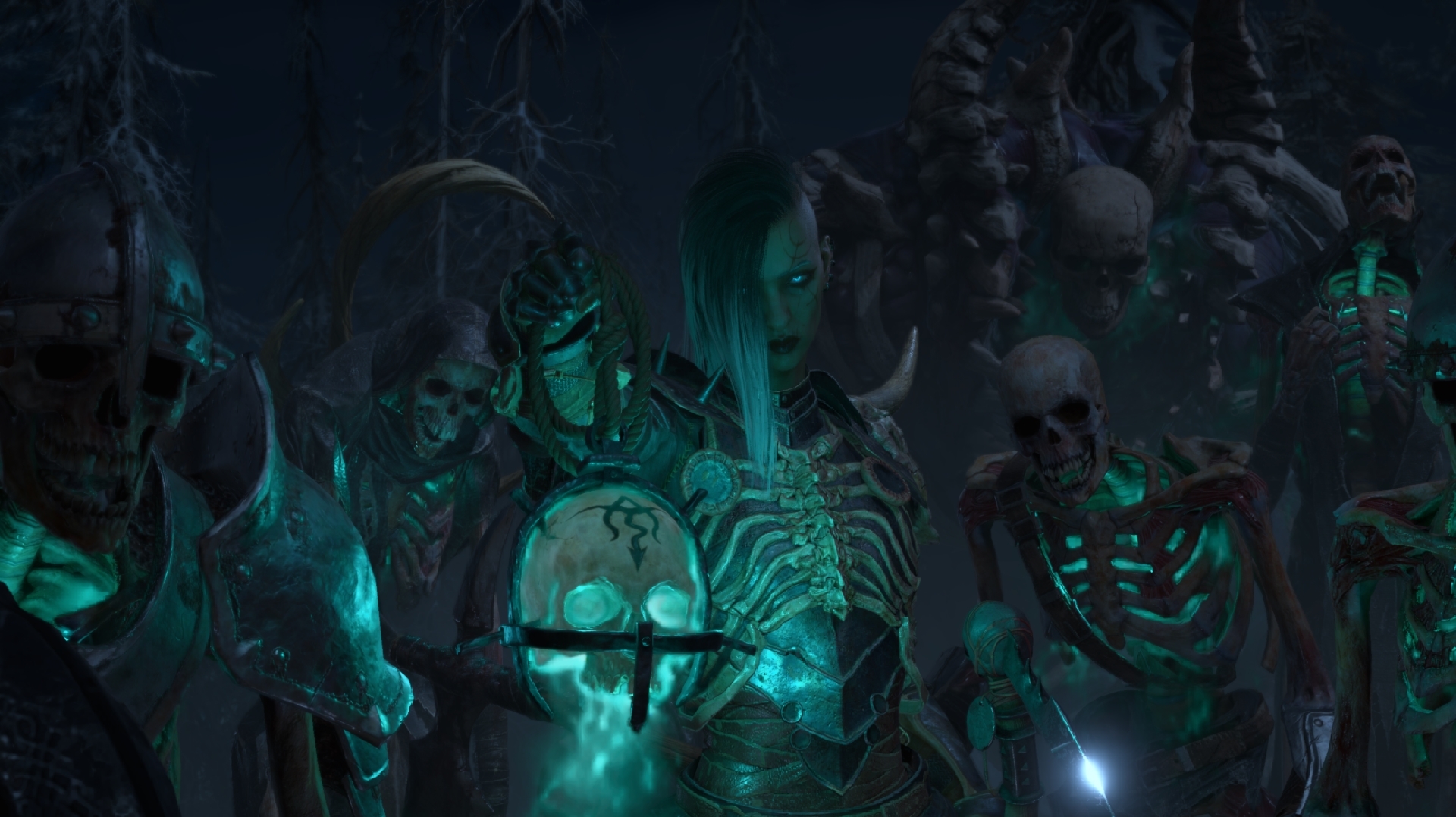Introduction
Welcome to our Diablo 4 Necromancer beginners guide! In this section, we go over the various pros and cons the Necromancer class has to offer, as well as their gameplay options. If you have been wondering whether or not the Necromancer is for you – look no further!
As expected from previous Diablo titles, the Necromancer prides itself in controlling the undead and wielding several dark magics. As a result, the Necromancer class is a powerhouse and most importantly – a ton of fun!
Pros
- Strong solo-play
- Powerful Crowd Control and self-sustain
- Great power fantasy
Cons
- Only 1 way to gain unstoppable/Immune (Blood Mist)
- No mobility Spell
Resources
In Diablo 4, the Necromancer class uses Essence as their “mana” type resource, and Corpses for various spells and effects.
Essence
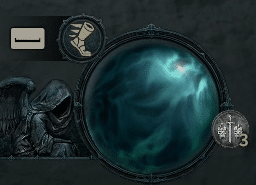
Essence is the primary resource for the Necromancer, the resource also regenerates passively. Basic skills in Diablo 4 generate the primary resource faster, as a result of this, balancing Basic skills and weaving them between other skills is key for uptime.
Corpses
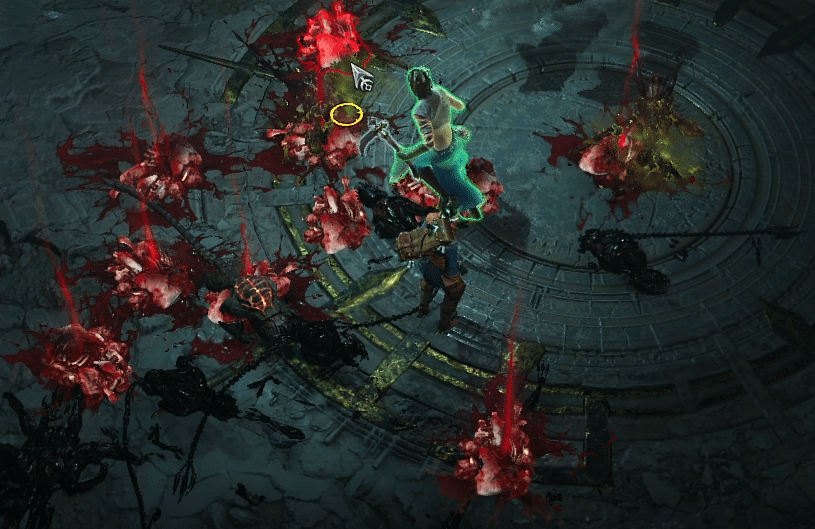
Secondly, corpses that spawn after slaying an enemy can be used to perform other actions, such as triggering Corpse Explosion or summoning many undead minions. The Necromancer class has various ways to also spawn additional corpses, further leaning into the playstyle.
Weapons
Necromancer in Diablo 4 has access to a variety of weapons, as a result, this allows for great variety in your preferred playstyles and build paths. The Necromancer can currently use the following:
- Dagger
- Sword
- Scythe
- Focus
- Shield
- Wands
Currently, we personally recommend using a two-handed Scythe when playing the Necromancer. Not only does the Scythe provide the best for the Necromancer in terms of mechanics, but also the thematic value is priceless! Throughout leveling however or preference depending, feel free to experiment and try all the combinations.
Equipment Slots
Should you choose to play the powerful Necromancer class, you can currently equip ten items in the available slots:
- Main hand weapon
- Off-hand weapon
- Head
- Chest
- Hands
- Legs
- Feet
- Amulet
- Ring 1
- Ring 2
Starting out with your Necromancer, feel free to equip every better piece of gear you find, ideally in the endgame the best in slot set is when you want to try and find specific pieces. As a beginner, getting a good idea of the class definitely comes first before optimizing and build min/maxing.
Stats
The Necromancer in Diablo 4 much like every class in the game relies on specific stats that excel them more than others. Each class such as the Necromancer receives specific benefits based on the Core Stats of the game:
Core Stats
- Strength – N/A
- Intelligence – 0.1% Skill Damage
- Willpower – 0.1% Resource Generation
- Dexterity – 0.02% Critical Strike Chance
Defensive Stats
Much like the Class-Specific stat benefits you can receive, your Core Stats also assist your base defensive stats, however this applies the same to all classes:
- Strength – +1 Armor per Stat
- Intelligence – +0.05% All Resistance per point
- Willpower – 0.1% healing Received and 0.25% Overpower damage per point
- Dexterity – 0.025% Dodge Chance per point
PvP Stats
There are two stats that every class uses in PvP to keep things as level or simple as possible:
- Damage Reduction – decreases the damage reduction granted against other players
- Armor Contribution – a secondary armor stat that is PvP specific, giving you increased base damage reduction
There are various other stats useful to each class and depending on the build you want to play. To see more options for your Necromancer such as Utility Stats and more Defensive stats such as elemental resistances and more in-depth details – check out our full Stats Guide!
Class Skill Groups
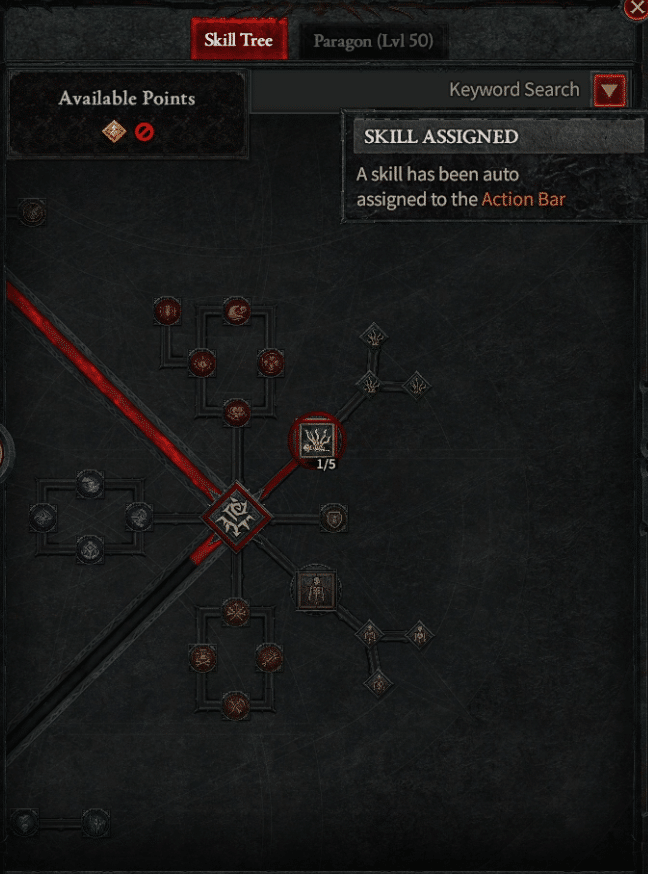
Diablo 4 does a great job of grouping sets of Skills to show their synergies and playstyle mechanics. Necromancer has the following groups:
- Basic – resource generation skills, spam-able between skills
- Core – core damage-dealing abilities that use the primary resource
- Corruption – Necromancers debuff skills
- Macabre – macabre has more mechanic-defining skills
- Summoning – using either your corpse resource or primary resource you can create minions to do your bidding
- Ultimate – the more powerful attacks you have access to, as a result, they have longer cooldowns
Most skills are also grouped into three key aspects:
- Bone
- Blood
- Darkness
For beginners, we suggest the following skills of a tried and tested set of skills to get you started:
- Corpse Explosion – makes any corpse targeted, explode, dealing damage in AoE
- Blood Mist – turns you into a bloody mist, making you invulnerable and slowly dealing damage with self-healing
- Summon undead – selecting a corpse creates an undead minion, up until your cap via Book of the Dead
- Army of the Dead – a simple ultimate skill that summons multiple undead to your aid
- Hemorrhage – Burst an enemy’s blood, deals damage and has a chance to form a Blood Orb
- Blood Surge – Drawing blood from the enemy, you are dealing damage and popping a blood nova. Blood Surge’s damage is increased depending on how many enemies have been drained
Class Mechanic – Book of the Dead
Each class has a unique mechanic, defining the class and separating it from others. For the Necromancer in Diablo 4, this mechanic is known as the Book of the Dead.
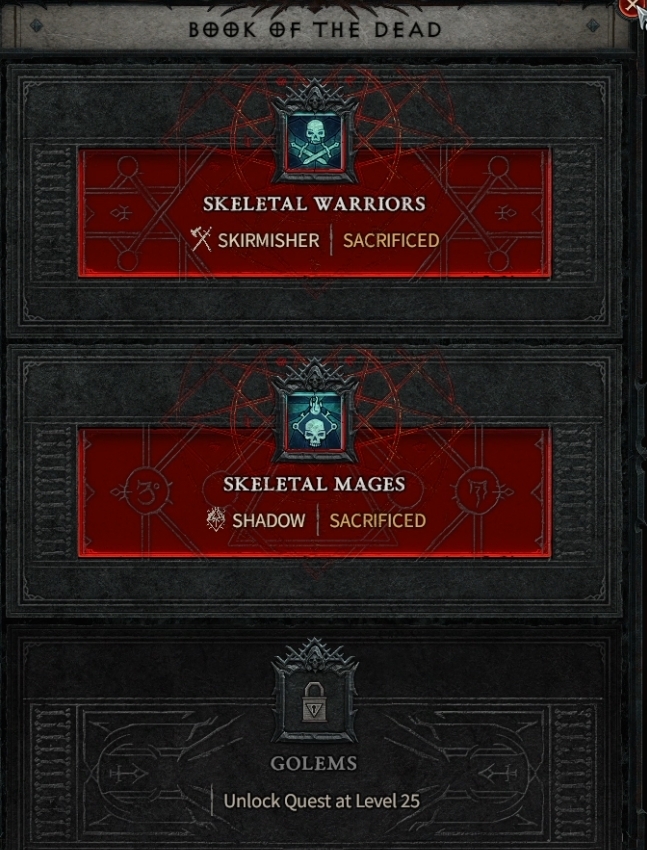
In the Book of the Dead, you can further customize your undead army with three summons, Skeletal Warriors, Mages, and Golems. Each customizable undead has three specializations to choose from, as a result, you can select whichever sounds best and most fun for you! Depending on the specialization chosen, the undead will have different functions, allowing you to create a more aggressive style or even an undead tank.
It should be noted too that each unit can be sacrificed to give you a personal passive buff to create a more powerful Necromancer, less reliant on the undead minions. This decision comes down to what Necromancer you would like to create.
Aspects
Aspects are legendary powers that can be extracted or imprinted onto items. You can grab these Aspects through dungeons and the Codex of Power and find Legendary items. Take a look at the current potential options you can build your Necromancer towards through Legendary Items:
- Explosive Mist – Blood Mist triggers Corpse Explosion on surrounding Corpses. When Blood Mist detonates a Corpse, its Cooldown is reduced by X seconds
- Frenzied Dead – Each time one of your Summoned Minions attacks an enemy they gain +X% Attack Speed for X seconds
- Blood Soaked – Blood Mist leaves a trail that lasts for X seconds and deals X% Shadow Damage per second to enemies who stand in it. Your Movement Speed is no longer reduced while Blood Mist is active
- Viscous: Your maximum number of Skeletal Mages is increased by 2
Necromancer Builds
Here are Some builds that you can use to level up or master the Necromancer Class
- Leveling 1-50
- BUILD: Bone Spear
- BUILD: Shadowmancer
- BUILD: Bone Spirit
- BUILD: Blood Necro
- BUILD: Minion Necro
Diablo 4 Necromancer Beginners Guide Conclusion
Thank you for checking out our Diablo 4 Necromancer Beginners Guide! After launch we plan on providing more in-depth build for every class so check back for more! Good luck on your Necromancer adventures! For more Diablo 4 content, click here.

